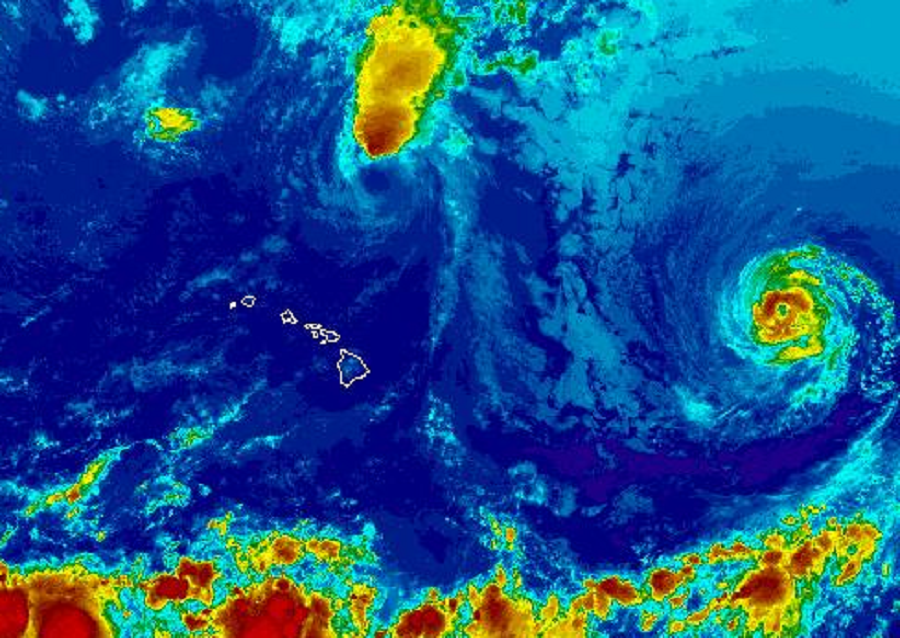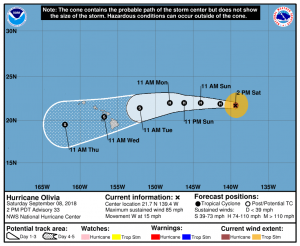
It is becoming likely that Olivia will impact Hawaii in the coming days. The National Hurricane Center is urging people in Hawaii to complete their Hurricane Action Plan at this time.
In the latest update from the National Hurricane Center, the center of Hurricane Olivia was located near latitude 21.4 North, longitude 138.0 West. Olivia is moving toward the west near 15 mph. This general motion is forecast to continue for the next couple of days, with a west-southwestward turn anticipated by Tuesday. On the forecast track, Olivia will cross 140W move into the Central Pacific basin today and could be approaching the Hawaiian Islands on Tuesday. Maximum sustained winds are near 85 mph with higher gusts. Olivia is forecast to remain a hurricane for the next couple of days. Hurricane-force winds extend outward up to 30 miles from the center and tropical-storm-force winds extend outward up to 115 miles. The estimated minimum central pressure is 983 mb or 29.03 inches.

While Olivia is forecast to remain a hurricane for the next few days, it is forecast to weaken to a tropical storm. However, even tropical storms can be devastating for Hawaii. Drier, more stable air from a subtropical high positioned to the northeast of Hawaii usually inhibits thunderstorms from persisting and remaining clustered near the cyclone’s center, and the same should be true with Olivia. Additionally, wind shear is typically stronger near the Hawaiian islands, acting to displace thunderstorms from the cyclone’s center. Cooler sea-surface temperatures in the Pacific waters to the north and east of the Big Island of Hawaii keep the air somewhat cooler above it, increasing the stability of the atmosphere, making it less susceptible to forming and maintaining thunderstorms.
In 2014, Hawaii’s Big Island was hit by Tropical Storm Iselle. It brought significant wind and flood damage to Hawaii, especially in the Puna district. Iselle created more than $150million in damages to Hawaii. In 2016, Hurricane Lester approached Hawaii as a category 4 storm but quickly weakened. Even though the storm passed well north of the islands as a hurricane, it did trigger flooding conditions in the Aloha State. Also in 2016, Tropical Storm Darby brought heavy rain and flash flooding back to Hawaii.
While it wasn’t hit directly by Hurricane Lane, the August storm did do considerable damage to the islands, including incredible flooding on Hawaii’s Big Island. Hurricane Lane may have also depleted many people’s hurricane supplies; as such, people should make sure they re-stock prior to Olivia’s arrival.
While it is still too soon to say where Olivia will strike and how much punch it’ll have when it does so, it is becoming likely that some parts of the state will see more floods and the threat of rock and land slides. People in flood prone areas anywhere in Hawaii should prepare for that possibility.